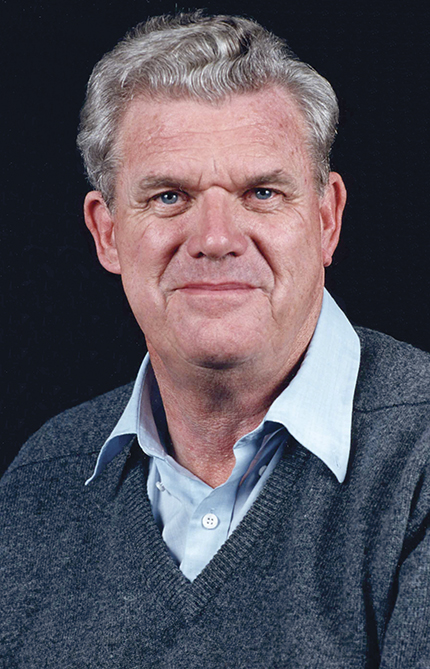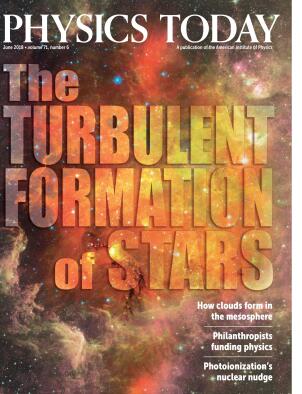Richard Edward Taylor
DOI: 10.1063/PT.3.3955
On 22 February 2018, Canadian-born physicist Richard Edward Taylor, Nobel laureate and Stanford University professor emeritus, passed away at his home on the Stanford campus. He shared the 1990 Nobel Prize in Physics with Jerome Friedman and Henry Kendall of MIT for their groundbreaking experiments in deep inelastic electron scattering, work that led to the development of the quark model.

Richard Edward Taylor
TOM NAKASHIMA, SLAC

Following their studies of elastic scattering of electrons from protons at SLAC in the late 1960s, Taylor and his research team and Friedman, Kendall, and their MIT group turned to studies of deep inelastic scattering. But they were not encouraged by recent literature on proton structure because little of that theoretical work mentioned inelastic results. Taylor and colleagues’ initial research, however, showed unexpectedly large cross sections, and they and others considered early on the possibility of constituents inside the proton.
Taylor and his team observed in their data a simplifying feature, so-called Bjorken scaling, but they did not clearly understand its significance. Richard Feynman, with his parton model, explained scaling in terms of scattering from constituents. However, other scientists suggested that the data could be explained by nonconstituent models involving the strong interactions. It took considerably more experimental and theoretical work to resolve the issues. Eventually those efforts—further inelastic measurements, including of electron–neutron inelastic scattering; sum rules from electron and neutrino inelastic scattering; the development of quantum chromodynamics; and the discovery of charm—all pointed toward quarks as the constituent partons.
Taylor was born on 2 November 1929 in Medicine Hat, Alberta, Canada, and went to the University of Alberta, where he earned an MS degree in 1952. He then went to Stanford and entered the physics graduate program. In 1958 he was invited by colleagues at École Normale Supérieure in Orsay, France, to work on experiments for their new accelerator at the Laboratoire de l’Accélérateur Linéaire. After three years Taylor returned to the US to work at the Lawrence Radiation Laboratory. He went back to Stanford in 1962 to complete his PhD under adviser Robert Mozley.
Shortly afterwards, Taylor went to work at SLAC, which was under construction. He soon found himself being asked to manage the construction of the spectrometers and the experimental hall, known as End Station A, that would contain them. In his Nobel lecture, Taylor said, “This was not an enviable position, since there was little agreement about what should be done, and most of the people involved clearly outranked me.” Ultimately, three spectrometers were built; the sizes—1.6, 8, and 20 GeV/c—covered the possible range of momenta of interest. Taylor heavily influenced the resulting design of the End Station facility and the spectrometers.
As the accelerator was being completed, Taylor formed one of SLAC’s experimental groups, named simply Group A, and began collaborating with MIT and Caltech groups on elastic electron-scattering experiments. Following those experiments, the Caltech team departed to work on other activities, and the SLAC and MIT groups turned to deep inelastic scattering experiments. Following the initial inelastic studies, Group A and the MIT group continued separately to explore the inelastic spectrum and used the spectrometers designed for that purpose.
Using a beam of polarized electrons at high energy at SLAC, Taylor and collaborators in 1978 conclusively demonstrated parity nonconservation in deep inelastic scattering from deuterium. A 1967 theoretical paper by Steven Weinberg entitled “A model of leptons” had implied that result, which supported unification of the electromagnetic and weak forces into a single electroweak force. Recognizing the importance of the result and the existing extensive body of experimental and theoretical work, the Nobel Committee awarded the 1979 Nobel Prize in Physics to Sheldon Glashow, Abdus Salam, and Weinberg for their contributions to what is now known as the standard model. It took the committee 11 more years to honor the initial deep inelastic scattering experiments that first led to our current understanding. A year before receiving the Nobel, Taylor, Kendall, and Friedman were awarded the W. K. H. Panofsky Prize in Experimental Particle Physics from the American Physical Society.
Taylor influenced many who collaborated with him when he was leader of SLAC’s Group A. He supported young physicists in numerous ways: He pushed aside barriers for them, opened doors in their fledgling careers, and shared thoughtful advice, wisdom, and helpful criticisms. Group A was also the temporary home for European visitors, many of whom rose to important positions in the European physics community. The group was Taylor’s home and family for the physics side of his life. He will be remembered as a bigger-than-life figure in the histories of SLAC and of particle physics.
More about the Authors
Charles Prescott. SLAC National Accelerator Laboratory, Stanford, California.
Martin Breidenbach. SLAC National Accelerator Laboratory, Stanford, California.
